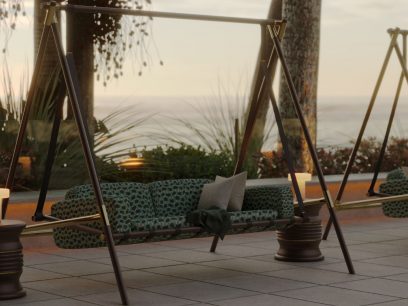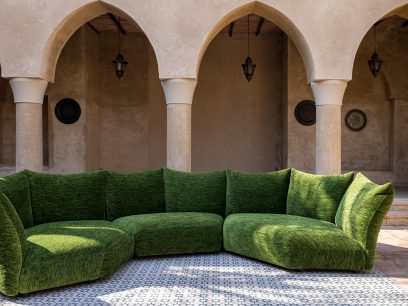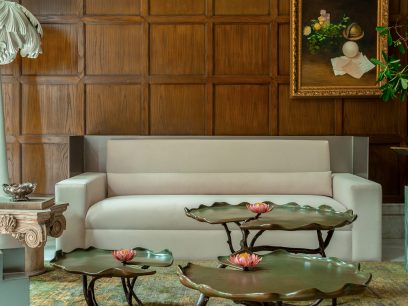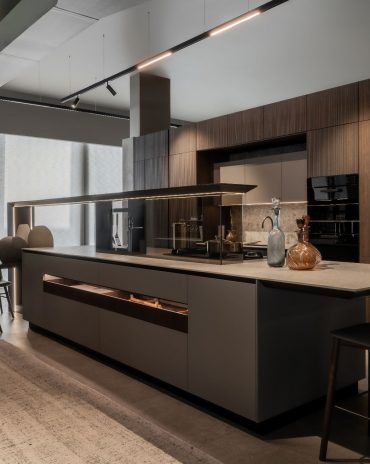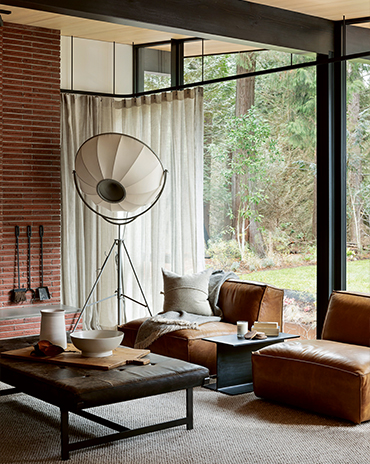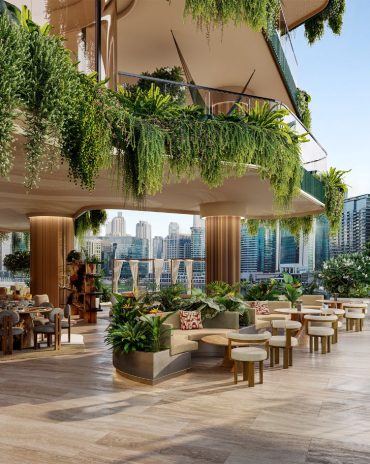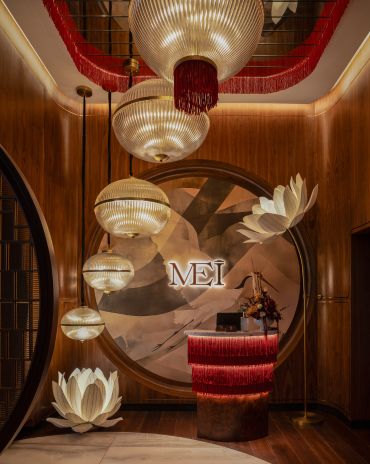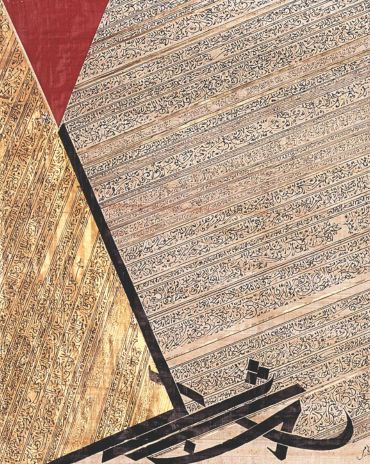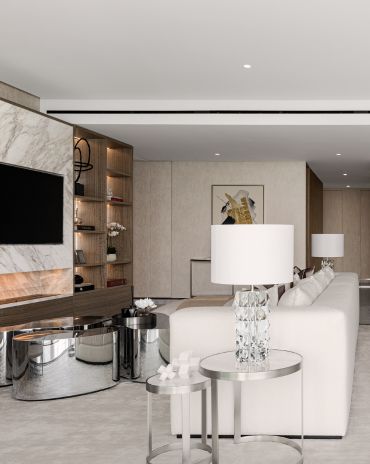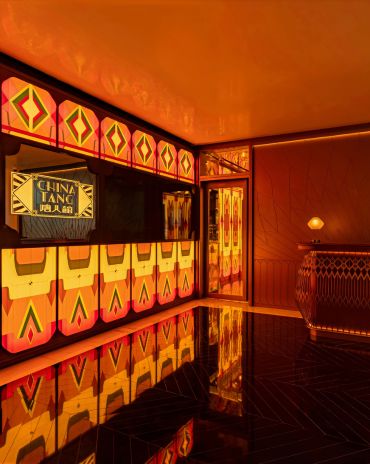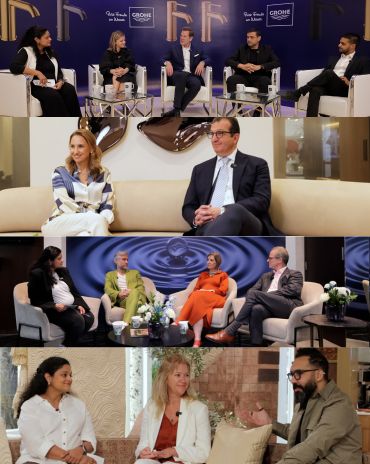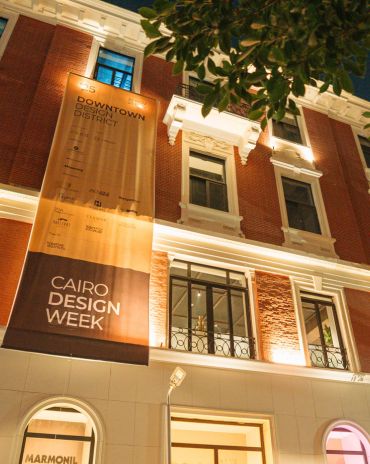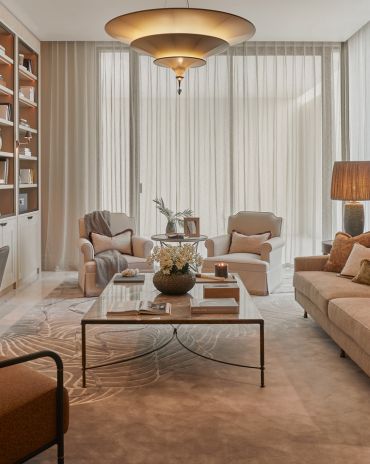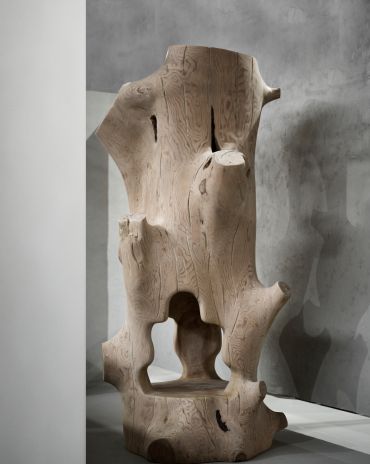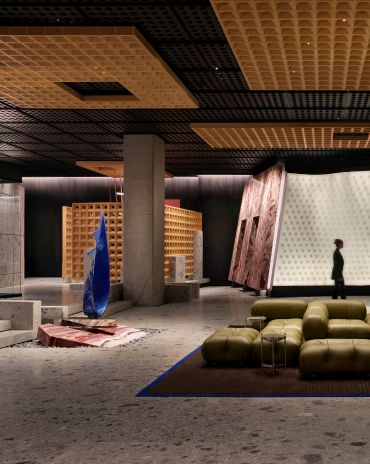Copyright © 2025 Motivate Media Group. All rights reserved.
Creativity, Culture and Cash
How Pallavi Dean grew Roar into a Middle Eastern interior design powerhouse
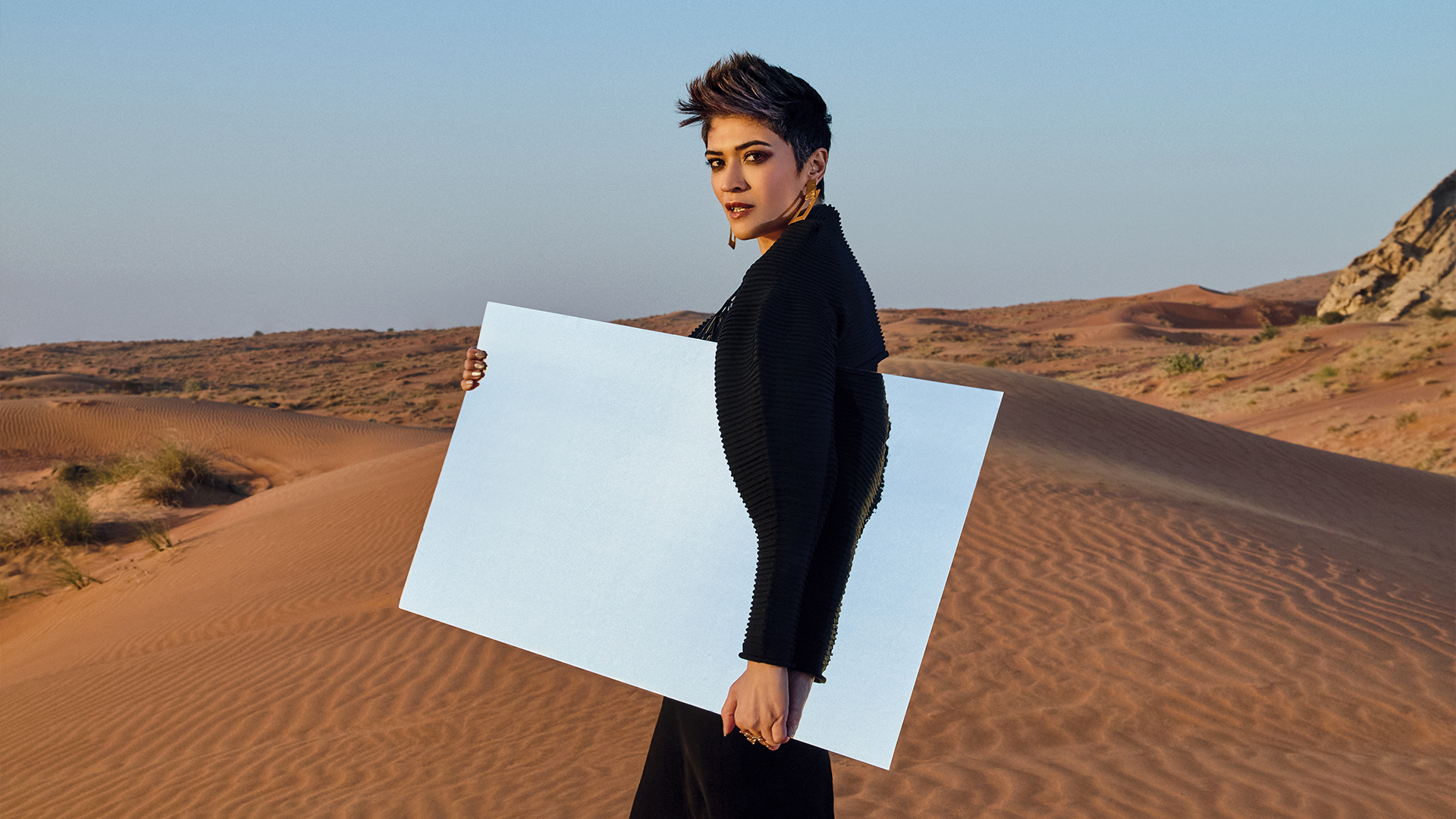
People often view money as a dirty word in the creative world, but Pallavi Dean rejects the ‘starving artist’ myth. The idea that creatives care only about their work – and money is a dirty word – is anathema to her. “Look, we do awesome creative work at Roar,” the founder of the award-winning interior design studio tells identity. “But you’ve got to pay for that. Profit and purpose are not enemies. They’re two sides of the same coin.” To understand Pallavi Dean – and why to her cash is as important as creativity – you have to understand her back story. “When I was 16, my dad’s paint supply business in Dubai went bust. We went from being a comfortable middle-class family to being broke. I will be eternally grateful to American University of Sharjah (AUS) that I got a 90% scholarship, and I had to beg, borrow and steal the other 10%. That shapes you as a person.”
Born and raised in the UAE, Dean’s Indian parents moved to the country in the 1970s and she grew up between Dubai and Sharjah. She earned her degree in architecture at the American University of Sharjah (AUS) in the second cohort when the university opened in the late 1990s. “There are a lot of second-generation Indian kids of my age in the UAE with successful businesses – but it’s family money. I’m not gonna lie; I’m proud of the fact that every dirham I have, I’ve earned myself,” Dean says.
When I recently met Dean while moderating a panel, it was made clear to me that she loves to learn. Two years ago, she topped up her architecture degree and master’s in interior design theory with an MBA from INSEAD, one of the world’s top business schools. Her approach is driven by an innate curiosity that radiates vitality and is manifested into an almost electric energy. Twenty-five years on from her graduation, Dean’s company Roar is one of the most successful interior design firms in the Middle East, as evidenced by the many accolades in the boardroom, including multiple wins at the identity Design Awards. This year, Roar won the best Interior Design – Office award for its work on the Ajman Rulers’ Court.
Dean breaks down her approach down into the “Ten C’s of Creativity,” which she shares with identity:
Bridging the Gap Between Creativity and Entrepreneurship: The 10 C’s of Balance
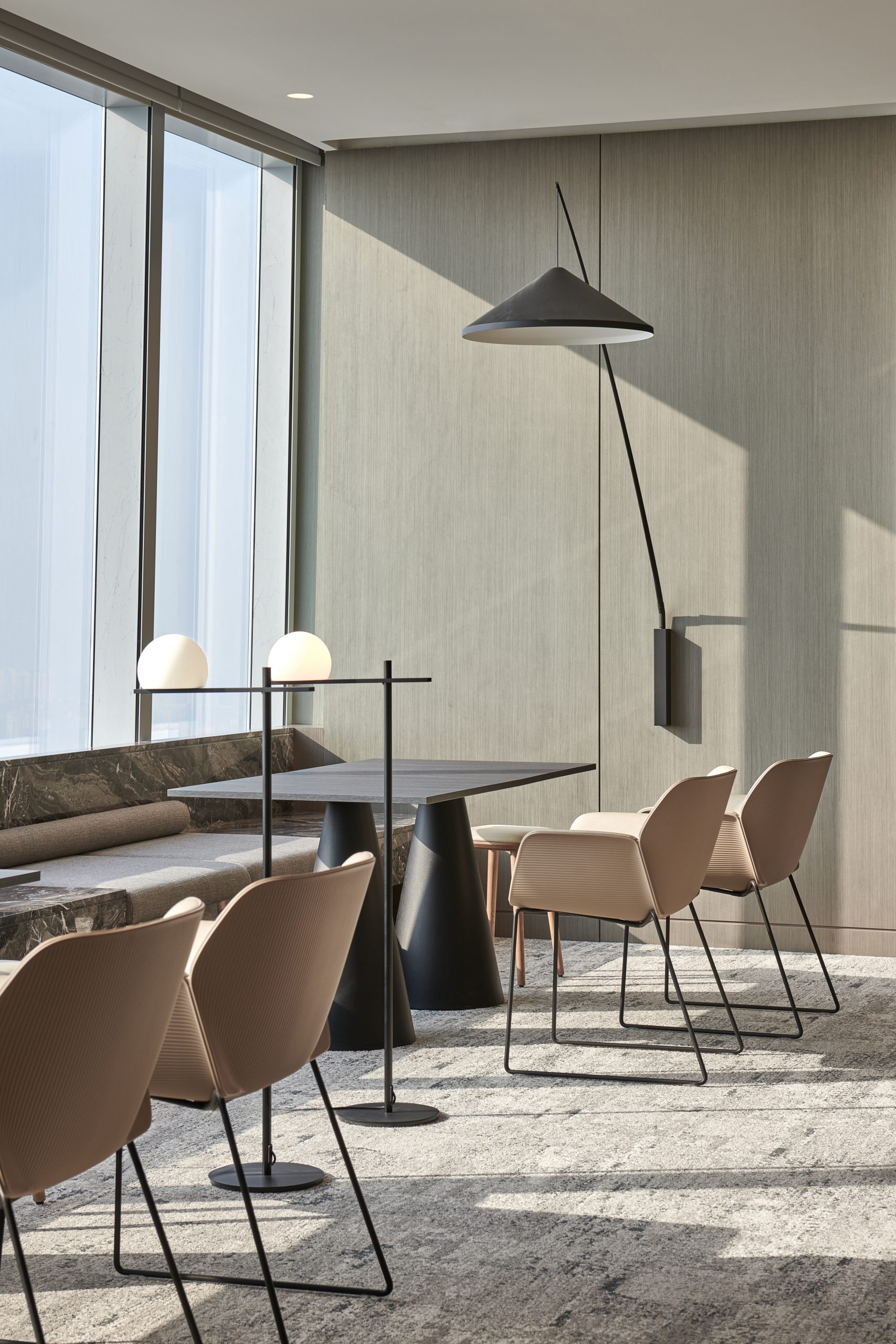
DMCC office
headquarters
Walk into any bookstore, and you’ll find shelves brimming with titles on leadership, strategy, operations and logistics. But there’s a glaring gap for resources that bridge creativity and entrepreneurship – two forces often seen as opposites. For instance, architects – some of the most creative professionals – frequently struggle with the business side of their craft. In the UK, nearly a third (32%) of architectural practices are at risk of failure – a stark reminder of how challenging it can be to balance creative chaos with the practical demands of finance and operations.
This begs the question: can you strike a perfect balance between the right and left sides of the brain? Can you craft iconic masterpieces that meet budgets and functional requirements, or are these goals mutually exclusive?
Having worked at the intersection of creativity and entrepreneurship for 20 years – 11 of those dedicated to refining my understanding – I’ve distilled my learnings into what I call ‘The 10 C’s of Balance’. These principles have guided my practice and may offer a roadmap for others navigating this challenging yet rewarding terrain.
1. Consistency
Anyone can create one standout project, but consistency is the hallmark of a truly great creative business. Think of musicians like Savage Garden, who dazzled with hits but vanished within a few years. Compare that with Madonna, who’s delivered decade after decade of culturally resonant work. In business, delivering one-off excellence is not enough – you need to balance quality with quantity. Consistent delivery builds trust, reputation and financial stability.
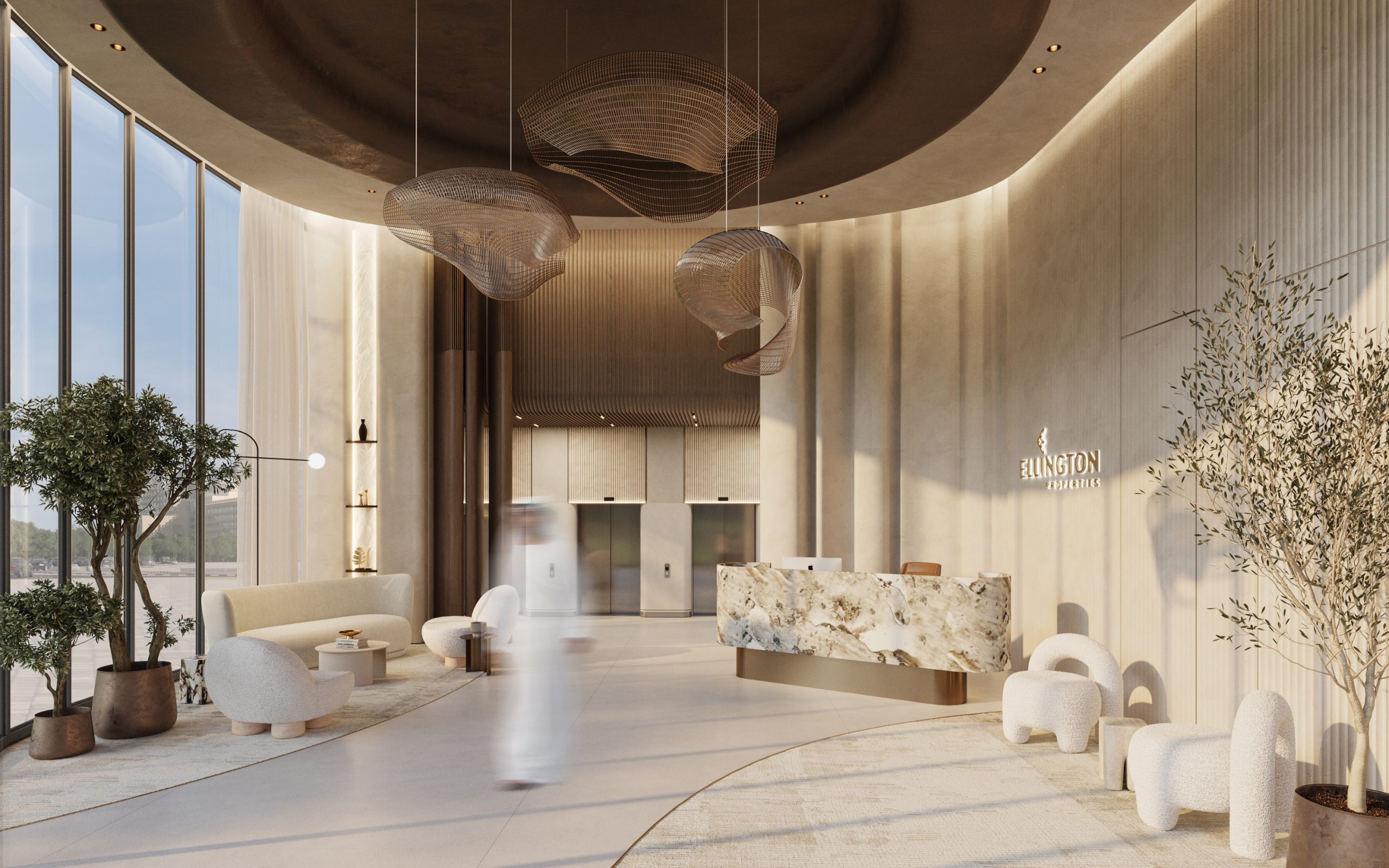
Ellington Properties’ lobby
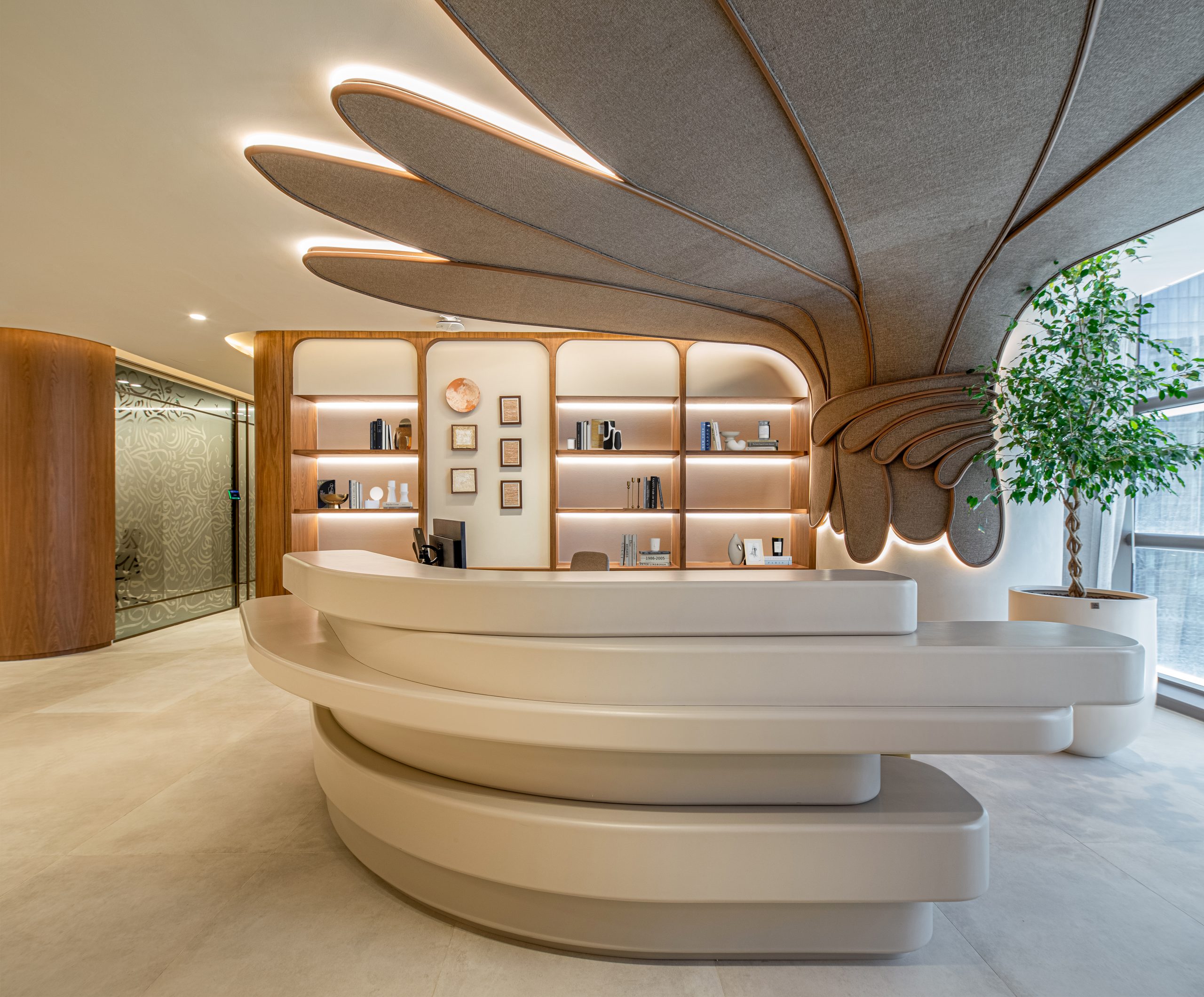
Oliver Wyman’s new Riyadh headquarters
2. Customer Service
In many industries, people often reduce customer service to a transactional concept, but in a creative business, it forms a cornerstone of long-term success. At Roar, 80% of our work comes from repeat clients and referrals, a statistic we’re immensely proud of. This level of trust isn’t built overnight; it’s the result of consistently delivering value, maintaining transparency and knowing when to go above and beyond. Every project is an opportunity to over-deliver – not in a way that undermines your profitability, but in ways that create memorable experiences for your clients. Sometimes, it’s the thoughtful details, like solving a problem before they notice it or suggesting an idea they hadn’t considered, that leave the strongest impressions. This ethos – what I call the Extra Mile Club – is about exceeding expectations while maintaining the integrity of the process. When customer service is executed well, you transcend the role of a consultant and become a trusted partner. You’re no longer just a supplier, but someone whose insights and expertise are integral to the client’s success.
3. Criticism
Opinions are cheap, but expertise is priceless. In a creative business, critiques will come at you from all directions – friends, clients, peers, even strangers online. Some of these critiques will offer valuable insights, while others will be ill-informed, superficial or simply a matter of personal preference. Design and creativity often spark strong opinions because they’re deeply personal. People may disagree with your choice of colour, layout or style because it doesn’t align with their taste. But taste is not the same as expertise. The success of your work should be judged against professional benchmarks – like meeting programmatic requirements, staying within budget or addressing the client’s brief – not individual preferences. Constructive feedback is a gift, but it only holds value when it comes from someone with a meaningful perspective. Whether it’s a mentor, a client with deep industry knowledge or a peer whose work you admire, seek critiques from those who can help you grow. The rest is just noise.
4. Competitors
Competition is inevitable – but it doesn’t have to breed animosity. The notion that competitors are villains to outmanoeuvre, or adversaries to conquer, is counterproductive. The ‘villain mentality’ in competition creates unnecessary hostility and damages the industry as a whole. Toxic rivalries lead to underbidding, poaching clients or spreading negativity to gain an edge. This creates distracted focus – don’t waste energy on tearing others down. Instead, focus on improving your own work.
5. Conscious
Human-centric design is at the heart of everything we do. It’s not just about aesthetics or functionality; it’s about creating spaces that resonate with users on a deeper level. A well-designed space should feel intuitive and comforting, and even calm the nervous system. To truly understand the needs of users, we must step into their shoes – considering their daily routines, emotional triggers and unspoken expectations. Empathy doesn’t stop at the design process; it’s also reflected in how we treat everyone we work with – colleagues, clients and consultants. Design schools emphasise technical skills and conceptual thinking, but often overlook emotional intelligence (EQ) – this must change!
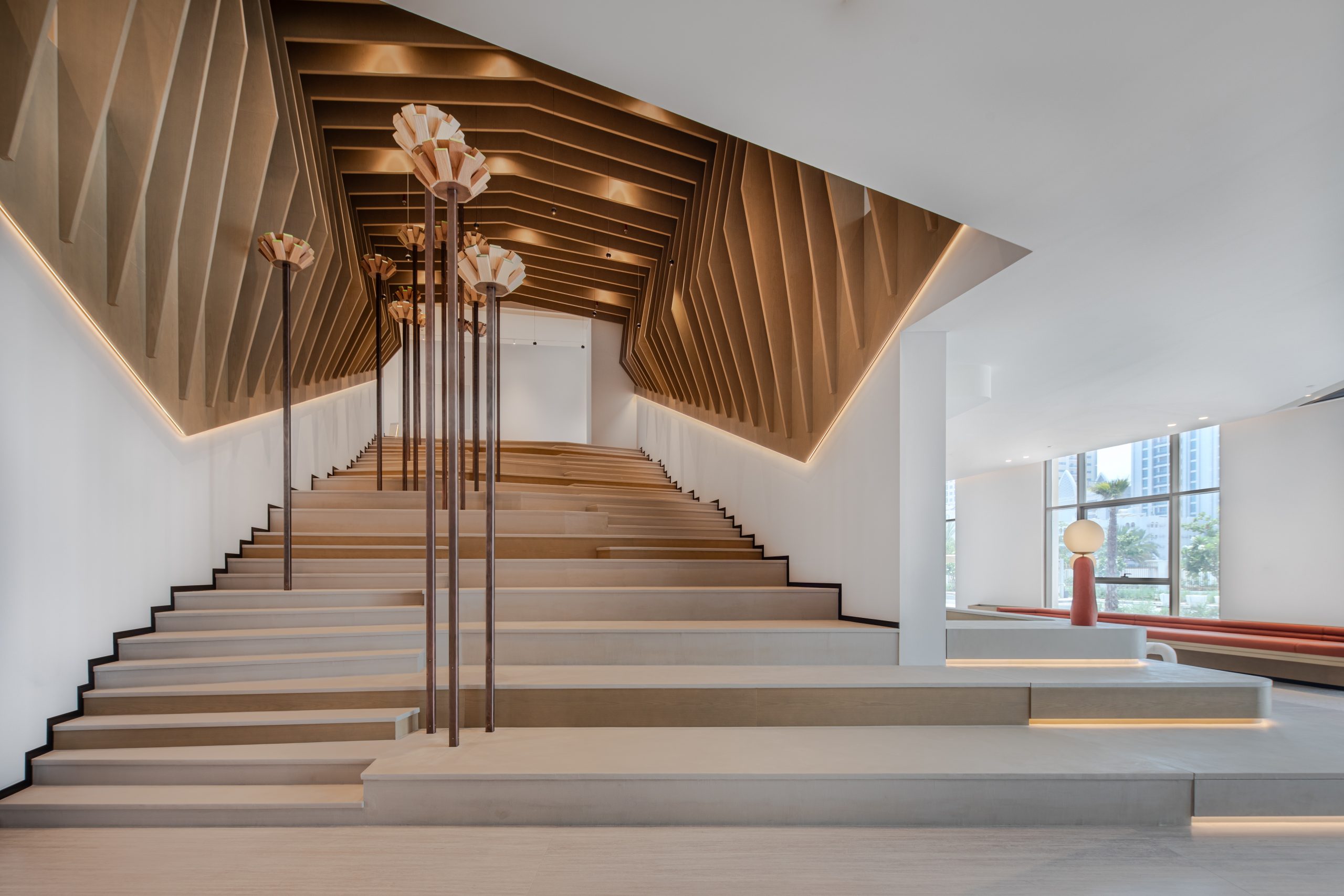
Ajman Rulers’ Court
– winner of the 2024 identity Design Awards for Interior Design: Office
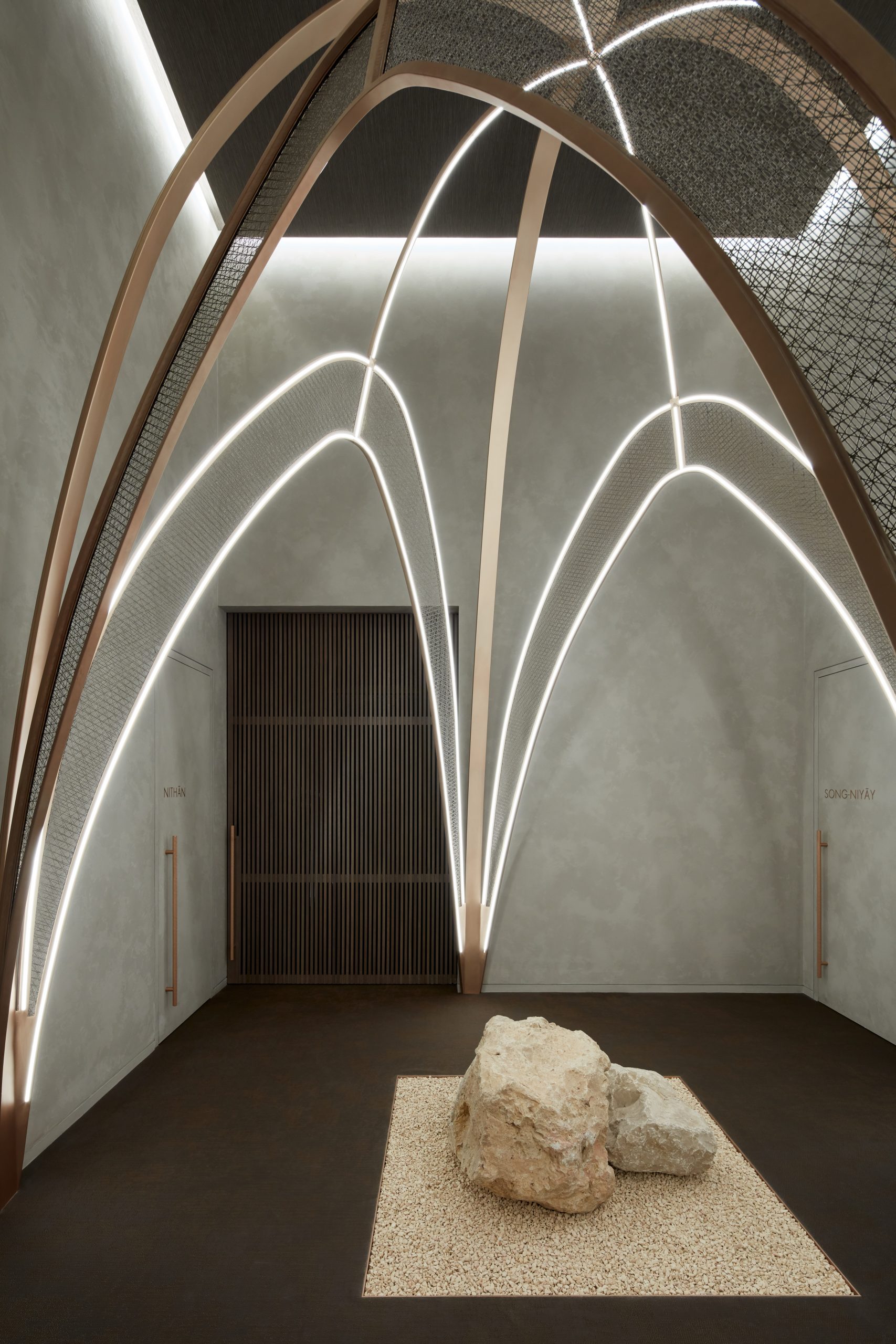
The courtyard for females at SENSASIA spa
6. Creative
Creative businesses thrive on the ability to disrupt and question norms. True innovation doesn’t always require starting from scratch; sometimes, it’s about studying tried-and-tested practices and finding opportunities to tweak and refine. Our team’s diversity – spanning nationalities, cultures, and professional backgrounds – is the cornerstone of our process. Creativity is rarely a linear path. We prioritise experimentation as a means of discovery, valuing the process as much as the outcome. Iterations allow us to refine our ideas, ensuring that every project reaches its full potential. In an age of over-reliance on tools like Pinterest for creative inspiration, we intentionally look elsewhere. We believe that drawing from the same sources as everyone else leads to derivative results. Instead, we turn to unexpected places: poetry, jewellery design, Generative AI. For us, creativity is not a chaotic spark of genius but a disciplined, intentional process.
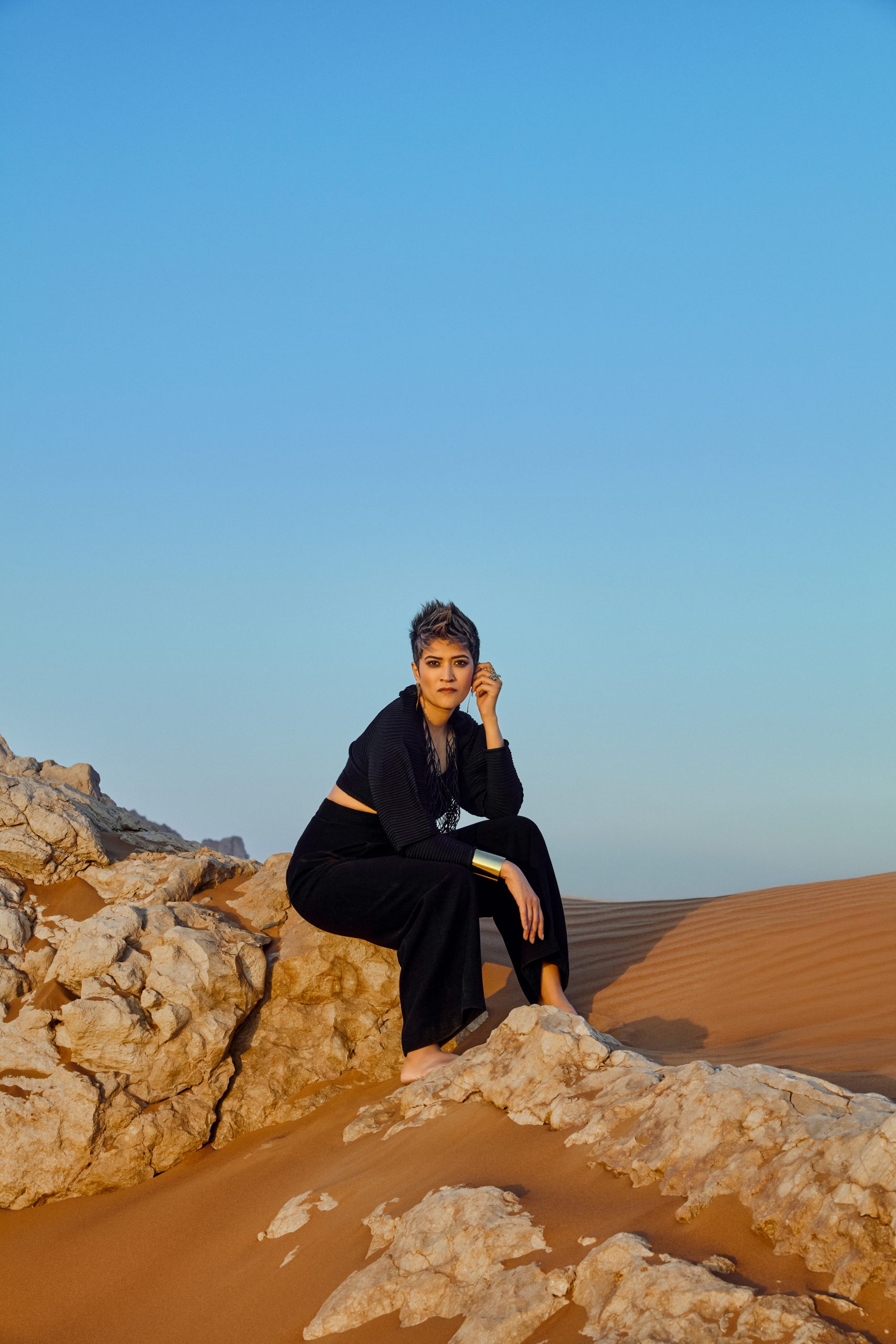
Image by Imran George Photography, taken at Mleiha Archaeological Park
7. Cash
Profitability matters. The romanticised image of the ‘starving artist’ is not only outdated but actively harmful to creative industries. It perpetuates the myth that passion and creativity should outweigh financial stability, undermining the value of creative labour. The reality is that running a sustainable creative business requires prioritising the bottom line just as much as the work itself. Free work – or even underpaid work – is a slippery slope. It devalues expertise and sets a precedent that creative labour is less deserving of fair compensation. While it’s tempting to say “yes” to unpaid projects for exposure or to please a high-profile client, the truth is that exposure doesn’t pay the bills, nor does it sustain your team. A significant pain point for creative businesses is late payments. The time and energy spent chasing overdue invoices can feel like a second full-time job; one that drains the creative spark. Standardising fair payment terms, such as deposits before project commencement and milestone-based payments, can reduce cash flow pressures and mitigate risks. Holding clients accountable for delays is non-negotiable. Late fees and penalties should become standard practice to encourage timely payments.
8. Culture
At the heart of any great creative practice is culture. While competitors may try to replicate our processes or poach talent, they can’t duplicate our ethos. Culture is the invisible glue that holds a business together, fostering loyalty and driving unique results. We built our culture on a foundation of play, creativity and collaboration, celebrating and nurturing individual aspirations. We encourage each person to bring their whole self to the work, empowering them to grow, experiment and contribute in ways that reflect their passions and strengths. This sense of belonging and personal growth is what makes our team truly exceptional.
9. Colleagues
A business is nothing without its people. At Roar, over 10 former employees have gone on to start their own practices. While I joke about wishing them “all the timesheets they never submitted to me,” I’m immensely proud of fostering a culture that encourages entrepreneurship. Exposing employees to every aspect of the business – from pitching to execution – creates a dynamic workplace. Yes, people will leave, and some departures will sting, but leadership is not a popularity contest.
10. Crystal (Awards and Recognition)
Third-party validation, such as awards, lends credibility to your work and can help build trust with clients and peers. However, not all awards are created equal: their value depends on the integrity of the judging process and the prestige of the recognition. Focus on meaningful accolades that celebrate your unique contributions, rather than chasing trophies for the sake of appearances. At their best, awards should reflect your commitment to excellence and act as milestones in your professional journey, not as the sole measure of success.
The Latest
Studio 971 Relaunches Its Sheikh Zayed Showroom
The showroom reopens as a refined, contemporary destination celebrating Italian craftsmanship, innovation, and timeless design.
Making Space
This book reclaims the narrative of women in interior design
How Eywa’s design execution is both challenging and exceptional
Mihir Sanganee, Chief Strategy Officer and Co-Founder at Designsmith shares the journey behind shaping the interior fitout of this regenerative design project
Design Take: MEI by 4SPACE
Where heritage meets modern design.
The Choreographer of Letters
Taking place at the Bassam Freiha Art Foundation until 25 January 2026, this landmark exhibition features Nja Mahdaoui, one of the most influential figures in Arab modern art
A Home Away from Home
This home, designed by Blush International at the Atlantis The Royal Residences, perfectly balances practicality and beauty
Design Take: China Tang Dubai
Heritage aesthetics redefined through scale, texture, and vision.
Dubai Design Week: A Retrospective
The identity team were actively involved in Dubai Design Week and Downtown Design, capturing collaborations and taking part in key dialogues with the industry. Here’s an overview.
Highlights of Cairo Design Week 2025
Art, architecture, and culture shaped up this year's Cairo Design Week.
A Modern Haven
Sophie Paterson Interiors brings a refined, contemporary sensibility to a family home in Oman, blending soft luxury with subtle nods to local heritage
Past Reveals Future
Maison&Objet Paris returns from 15 to 19 January 2026 under the banner of excellence and savoir-faire
Sensory Design
Designed by Wangan Studio, this avant-garde space, dedicated to care, feels like a contemporary art gallery

